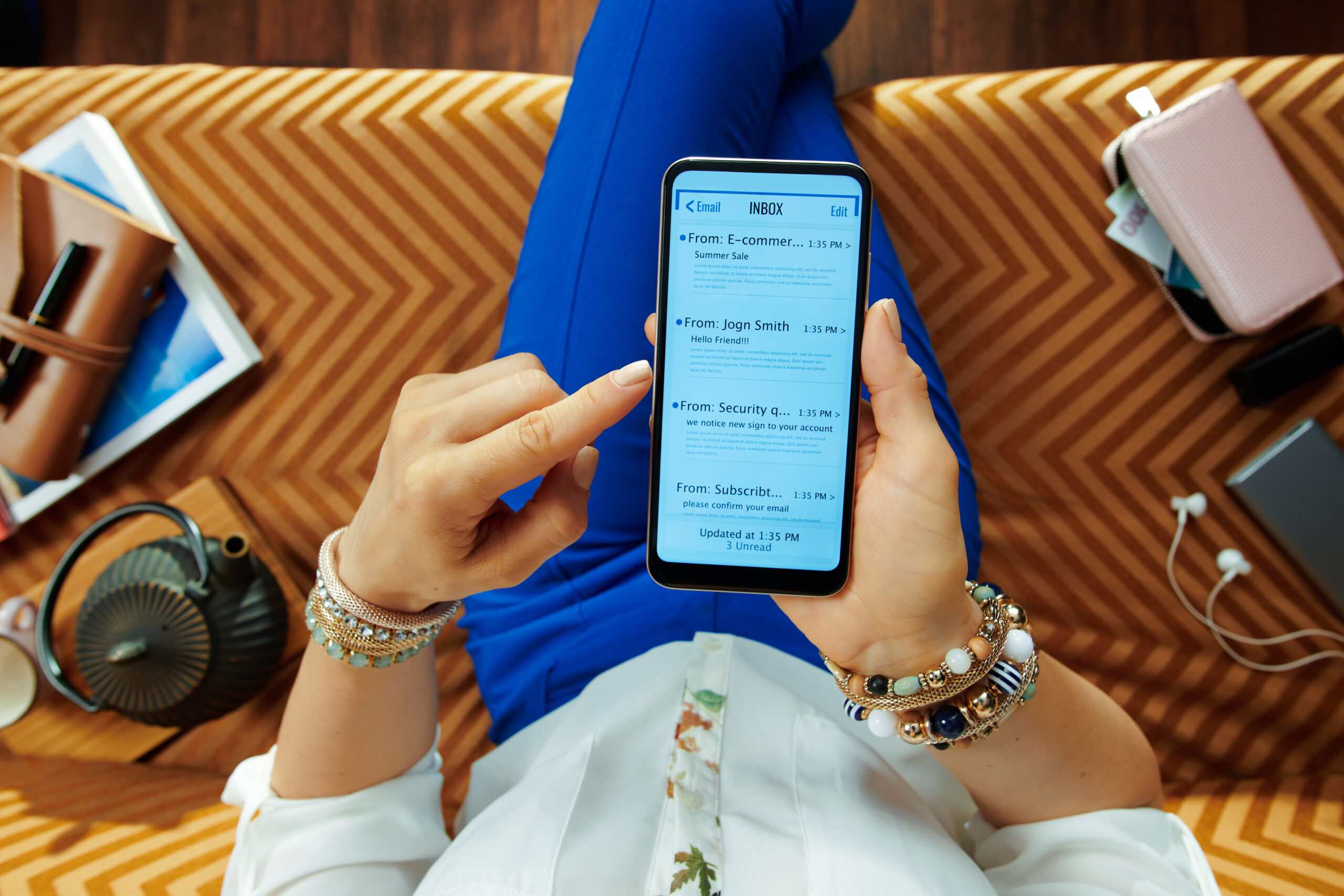
A surprising number of marketers don’t understand that mailbox providers (MBPs) use subscriber engagement to determine where to filter (e.g. inbox, spam, blocked) the emails you send.
Why? Simple: high engagement rates are a clear sign that your content resonates with your audience. Low engagement means they aren’t interested in your content or your business (so why would they be pushed through to the inbox?).
So, how do you ensure your subscribers are engaged? Below are eight data-backed strategies for leveling up your email marketing engagement, why they work, and examples or pointers on how to implement them.
1. Send welcome emails (and other triggered emails)
Not to be confused with your run-of-the-mill transactional email, a triggered messaging program automates the sending of emails based on subscriber actions or specific conditions (i.e., abandoning a cart or recognizing a subscriber’s birthday).
That’s where welcome emails come in. A welcome email involves sending a series of introductory emails to new subscribers and is a great way to introduce your brand, set expectations, and offer incentives.
Why it works
New leads have been proven to be the most engaged within the first 48 hours of subscribing. Studies show 74 percent of consumers actually expect a welcome email as soon as they subscribe.
As a result, these emails average four times the open rate and five times the click-through rate of a standard email marketing campaign.
How to implement
Our advice? Don’t be afraid to strike while the iron’s hot.
Stitch Fix kicks off its welcome program by offering new subscribers the option to personalize their communication via a short quiz.
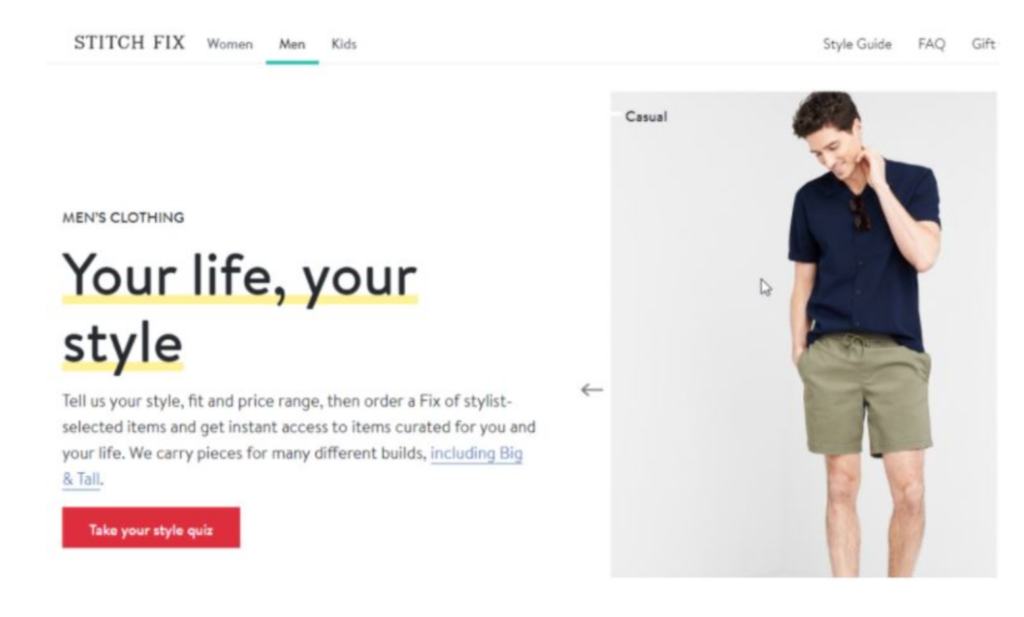
By collecting data about their customers’ purchasing behavior, they can make more relevant recommendations.
2. Practice list segmentation
Email segmentation is the act of breaking your email list up into smaller segments based on different criteria for more targeted messaging. As you gain more insight into your subscribers, you can identify patterns that will help you create personas.
Why it works
Targeting personas is key, here, as tailor-made content can increase conversions, loyalty, advocacy, and customer satisfaction. In fact, segmented email campaigns have been proven to drive a 760 percent increase in revenue, as they allow for more personalized communication leading to fewer unsubscribes and spam complaints and higher conversion rates.
How to implement
Optimize emails to boost brand engagement by doing the following:
- Explore available consumer data points to inform your segmentation, like date of opt-in, days since last engagement, purchase history, interests, etc.
- Learn more about your subscribers by asking them for information directly! Start by implementing a solid zero-party data strategy.
Example: Lululemon’s Email Preference Center
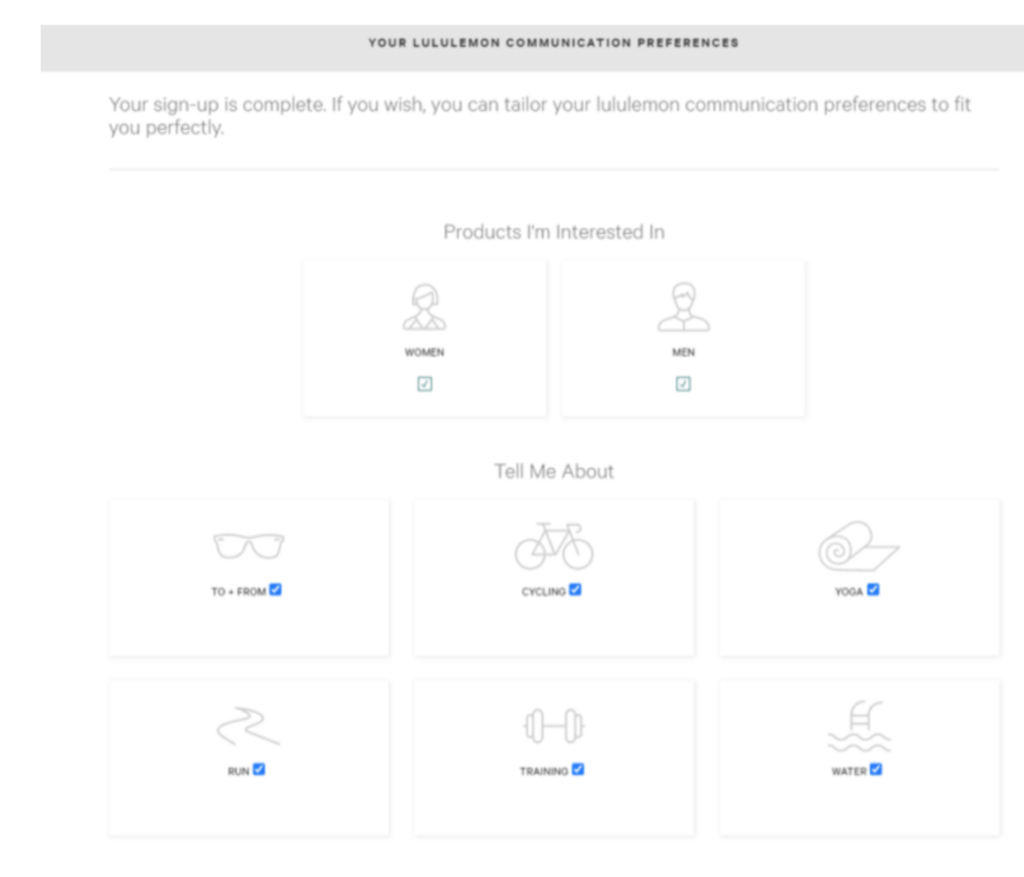
- Create a preference center to collect information about subscribers’ interests and allow subscribers to sign up for different email streams.
- Different segments should receive different content, offers, and subject lines.
3. Practice personalization
Email personalization involves using subscriber data to create targeted, relevant email content. This could be anything from mentioning their first name or the last purchase they made to making recommendations based on where they live.
Why it works
Today’s consumers want experiences tailored to their interests and needs—and are willing to share information to make that happen. In a recent study, 73 percent of consumers said they would rather do business with brands that use personal information to increase the relevancy of their experiences—and a staggering 86 percent said personalization influences their buying decisions.
How to implement
One of our favorite email personalization tips is leveraging behavioral data. This email by Urban Decay is a great example. This was sent to a shopper who showed interest in its NAKED eyeshadow. And, while the email does urge the shopper to “get it now,” it also suggests holding on to the email so they don’t forget in case they’re not ready to buy just yet. A B2C brand might take this a step further and offer a discount if the subscriber were to finish checking out.
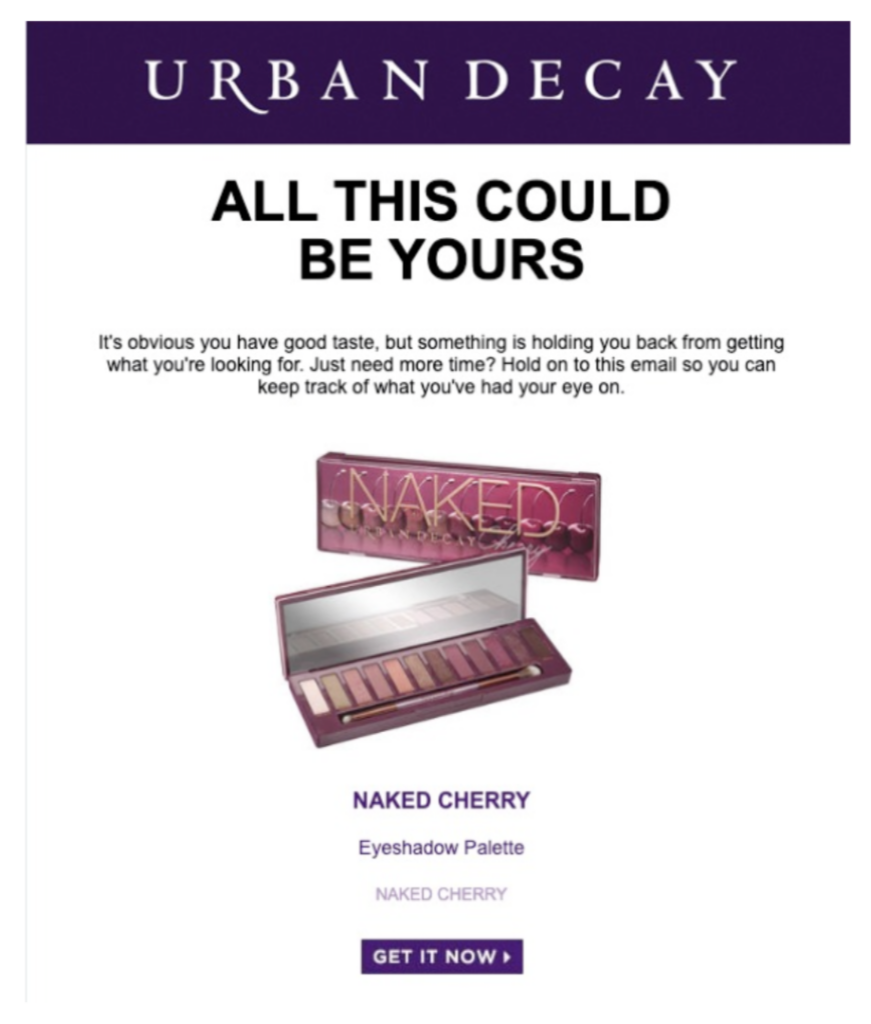
4. Test for optimal sending frequency
According to Hubspot, most marketers determine the frequency of their email sends based on past email engagement data—and with good reason! If you’re not planning your email strategy around key email metrics, you’ll only end up losing in the long run.
Why it works
The right email cadence or sending frequency keeps subscribers engaged without bombarding them (which is sure to get your emails marked as spam or worse).
In a recent case study, Hubspot reportedly found that sending more frequent emails increased engagement rates. By increasing email frequency from once a week to twice a week, HubSpot saw a 53 percent increase in click-through rates and a 50 percent increase in open rates.
How to implement
When it comes to finding that sweet spot, there’s unfortunately no magic formula. Experimenting with different sending frequencies to determine what works is your best shot at staying in the inbox. Besides that, try:
- Sending emails at different frequencies to different segments;
- Paying close attention to positive engagement rates (i.e. opens and clicks);
- Keeping an eye on negative signs (i.e., spam complaints or your “deleted without read” rate) to get a fuller picture of what your subscribers do and don’t like, and;
- Remember that engagement email marketing is a two-way street!
5. Don’t forget mobile optimization
Mobile optimization is a crucial component of a successful email marketing campaign. Making your emails easy to read and interact with on smaller screens isn’t just good business sense––it’s the right thing to do.
Why it works
With nearly five billion people actively using mobile phones, it’s no wonder that checking email is the second most popular smartphone activity. In fact, Hubspot reports that mobile device users account for 41 percent of all email views.
How to implement
Understand what devices your subscribers use to view messages, and test and optimize email for those devices.
You can make light work of it by using a previewer tool like Everest’s design test functionality to see how the email will render across different desktop, mobile, tablet, and webmail clients.
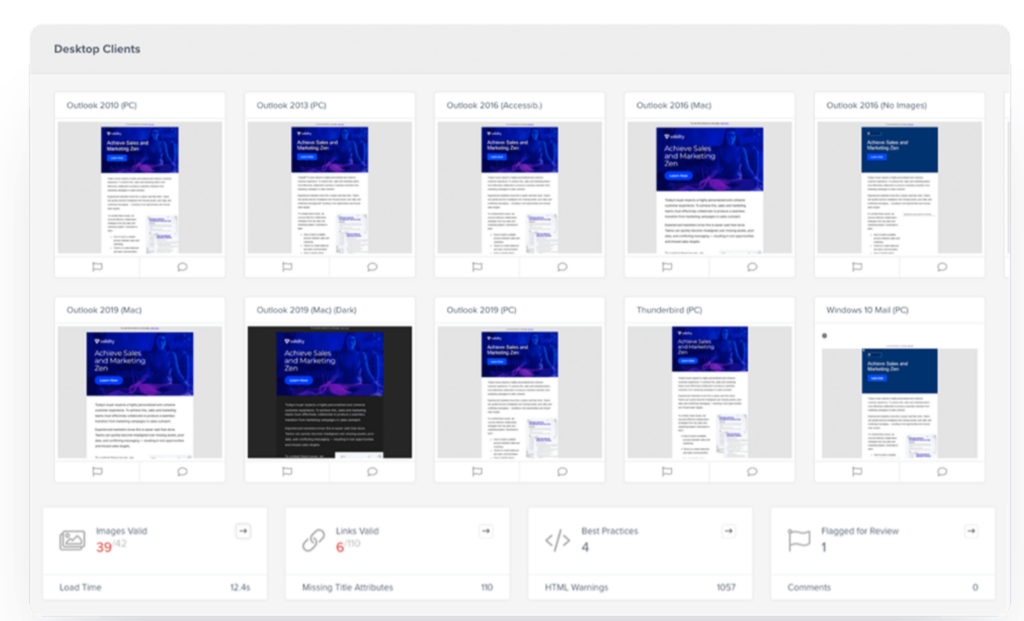
6. Use engaging visuals
Not only does a poorly designed email scream “SPAM”, but it can confuse recipients and have them hit “delete” before they’ve even read the entire email. Plus, it makes for a poor customer experience.
Why it works
Humans process visuals 60,000 times faster than text. So, unless you’re going for the hyper-personal “email-as-if-from-a-friend” approach, visuals are a key element of email design. They make your emails more engaging, easier to digest, and better communicate your brand identity as being recognizable increases your chances of being seen as trustworthy and helps you stand out against your competitors in your subscribers’ inboxes.
How to implement
Recipients should be able to tell if an email comes from your brand without reading any of the copy so be sure to match the look and feel of the rest of your marketing assets. You should also include your brand name or logo in the email header and sender name. Some other best practices and accessibility guidelines include:
- Keeping images between 1 MB and 5 MB;
- Choosing legible fonts;
- Adding alt text;
- Creating a simplified text version of your emails;
- Using contrasting colors;
- Break up text blocks, and;
- Finally, when in doubt, keep it simple!
Mejuri proves that a simple one-column design can work just as well as something more complex.

The email follows a steady pattern of big image > short description > call-to-action. The CTAs each link to a different landing page and serve to drive traffic to popular categories on the Mejuri store. This approach is more interesting than just doing a product feature and gives subscribers a lot of opportunities to click through.
7. Use clear calls to action
Clear CTAs can significantly increase click-through rates, guiding recipients toward the next step. Optimizing the call to action (CTA) in your emails can be a great way to get more people to engage.
Why it works
Email CTAs get an average click-through rate of three to five percent. CTAs cut through the noise and tell the recipient what action to take and they remove confusion by giving context to the surrounding content.
How to implement
At minimum, CTAs should provide clear value and information about what will happen once the link is clicked. Using concise, actionable language to guide subscribers towards a desired action. But if you really want to make CTAs stand out, try these tips:
- Boost email engagement with buttons, use a bigger font size, make text bold, or underlined, and/or add a pop of color.
- Ensure links have ample whitespace around them so nothing interferes with clicking or tapping.
- For mobile devices, adding padding or margins helps make clickable elements easier to interact with.
- Make the clickable area of your CTA at least 44×44 points in size, per Apple’s recommendation.
8. Encourage social sharing
Think outside of the (in)box––adding social sharing buttons to your emails means more opportunities to increase reach and email engagement.
Why it works
Your customer’s voice is your biggest marketing asset. Social proof has been proven to positively influence consumer behavior. After all, since consumers have nothing to gain from promoting a brand, their word is seen as credible to other consumers and prospective buyers.
How to implement
Sharing your emails can potentially increase audience size and engagement. In this email example, beauty subscription box, Ipsy, incentivizes social sharing by offering the opportunity to “skip the wait” for a new product in exchange for telling a friend.
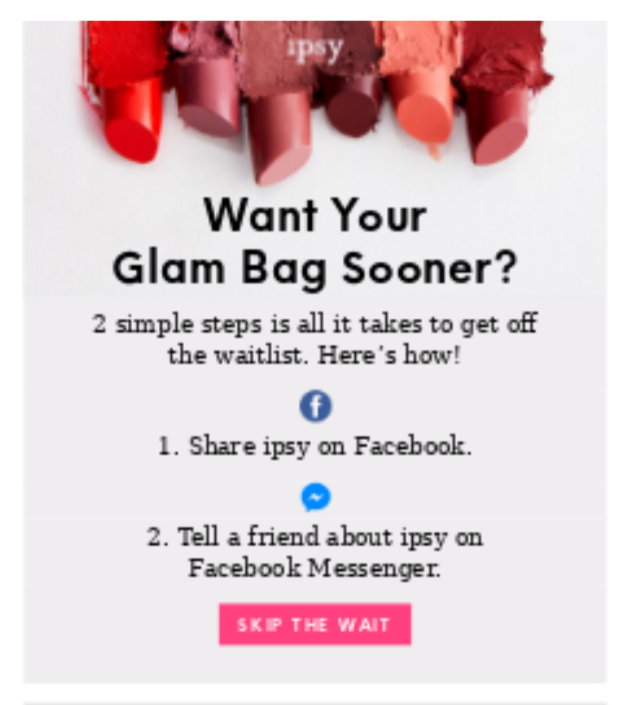
Build record-breaking email campaigns
As stated above, in the dynamic realm of email marketing, understanding what makes your subscribers tick (or swoon!) is your key to sky-high email engagement. By adopting these strategies, your email campaigns can achieve all new heights of success.
Need an extra hand? Validity Everest gives you a deeper understanding of what best engages your audience and checks to ensure your emails look great and function flawlessly. By going beyond surface metrics like clicks and opens and measuring true email deliverability, Everest gives you the intel to create campaigns that convert.